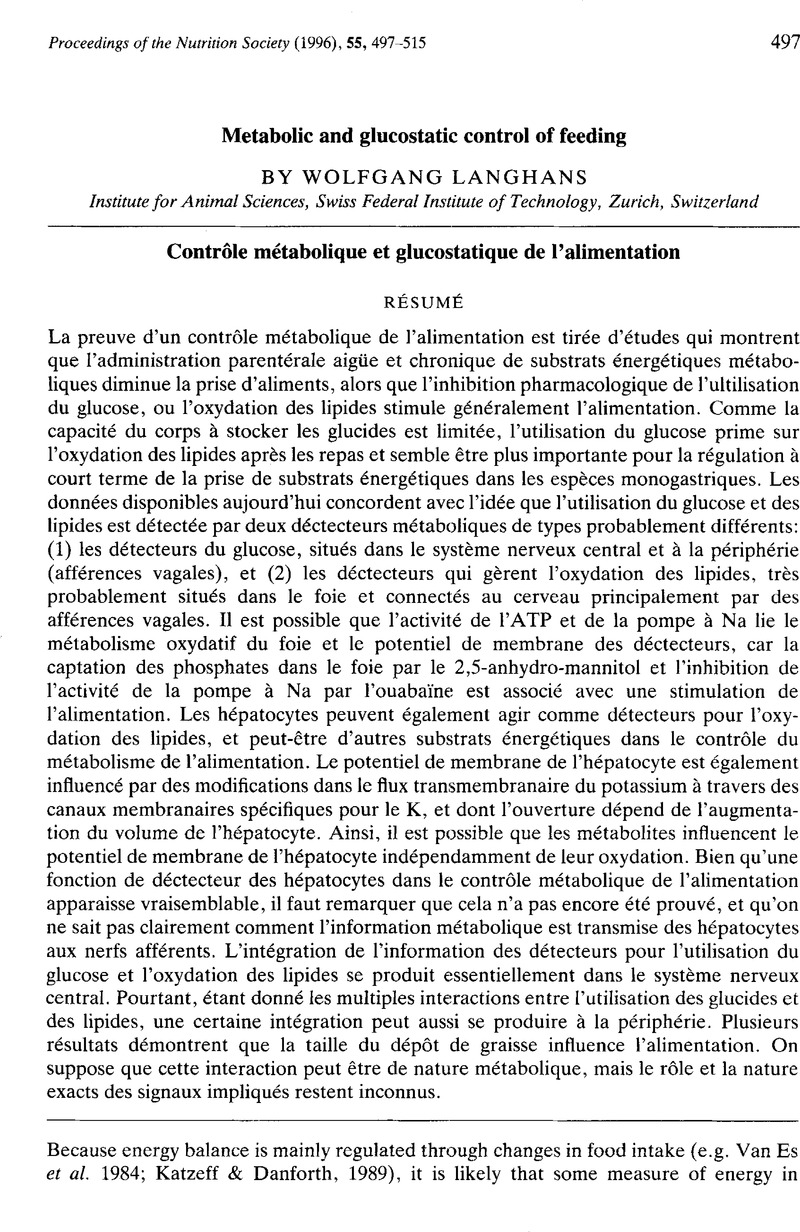Crossref Citations
This article has been cited by the following publications. This list is generated based on data provided by Crossref.
Stubbs, R. James
1998.
Appetite, feeding behaviour and energy balance in human subjects.
Proceedings of the Nutrition Society,
Vol. 57,
Issue. 3,
p.
341.
Bergeron, Raynald
Lavoie, Jean-Marc
Cardin, Sylvain
Latour, Martin G
Désy, FranÇois
Hélie, Richard
and
Yamaguchi, Nobuharu
1998.
Effect of Hepatic Portal Injection of Ouabain on the Hepato-Sympathoadrenal Reflex.
Physiology & Behavior,
Vol. 63,
Issue. 5,
p.
779.
French, Stephen J.
1999.
The effects of specific nutrients on the regulation of feeding behaviour in human subjects.
Proceedings of the Nutrition Society,
Vol. 58,
Issue. 3,
p.
533.
Stubbs, R.James
1999.
Peripheral signals affecting food intake.
Nutrition,
Vol. 15,
Issue. 7-8,
p.
614.
James Stubbs, R
and
O’Reilly, Leona
1999.
Neural and Metabolic Control of Macronutrient Intake.
Woods, Stephen C.
Schwartz, Michael W.
Baskin, Denis G.
and
Seeley, Randy J.
2000.
Food Intake and the Regulation of Body Weight.
Annual Review of Psychology,
Vol. 51,
Issue. 1,
p.
255.
Martinez, J. Alfredo
2000.
Body-weight regulation: causes of obesity.
Proceedings of the Nutrition Society,
Vol. 59,
Issue. 3,
p.
337.
Ingvartsen, K.L.
and
Andersen, J.B.
2000.
Integration of Metabolism and Intake Regulation: A Review Focusing on Periparturient Animals.
Journal of Dairy Science,
Vol. 83,
Issue. 7,
p.
1573.
Bray, George A.
and
York, David A.
2001.
Comprehensive Physiology.
p.
1015.
French, Stephen J.
and
Yeomans, Martin R.
2001.
Role of the upper gastrointestinal tract in regulation of human feeding.
Nutrition,
Vol. 17,
Issue. 3,
p.
264.
Woods, Stephen C.
and
Seeley, Randy J.
2002.
Stevens' Handbook of Experimental Psychology.
Clegg, Deborah J.
Wortman, Matt D.
Benoit, Stephen C.
McOsker, Charles C.
and
Seeley, Randy J.
2002.
Comparison of Central and Peripheral Administration of C75 on Food Intake, Body Weight, and Conditioned Taste Aversion .
Diabetes,
Vol. 51,
Issue. 11,
p.
3196.
French, Stephen
and
Castiglione, Kate
2002.
Recent advances in the physiology of eating.
Proceedings of the Nutrition Society,
Vol. 61,
Issue. 4,
p.
489.
Seeley, Randy J.
and
Woods, Stephen C.
2003.
Monitoring of stored and available fuel by the CNS: implications for obesity.
Nature Reviews Neuroscience,
Vol. 4,
Issue. 11,
p.
901.
French, Stephen
and
Robinson, Tristan
2003.
Fats and food intake.
Current Opinion in Clinical Nutrition and Metabolic Care,
Vol. 6,
Issue. 6,
p.
629.
WADE, GEORGE N.
and
JONES, JULI E.
2003.
Lessons from Experimental Disruption of Estrous Cycles and Behaviors.
Medicine & Science in Sports & Exercise,
Vol. 35,
Issue. 9,
p.
1573.
French, Stephen
2004.
Effects of dietary fat and carbohydrate on appetite vary depending upon site and structure.
British Journal of Nutrition,
Vol. 92,
Issue. S1,
p.
S23.
Geary, Nori
2004.
Is the control of fat ingestion sexually differentiated?.
Physiology & Behavior,
Vol. 83,
Issue. 4,
p.
659.
Fischer, Karina
Colombani, Paolo C
and
Wenk, Caspar
2004.
Metabolic and cognitive coefficients in the development of hunger sensations after pure macronutrient ingestion in the morning.
Appetite,
Vol. 42,
Issue. 1,
p.
49.
Woods, Stephen C.
Benoit, Stephen C.
Clegg, Deborah J.
and
Seeley, Randy J.
2004.
Regulation of energy homeostasis by peripheral signals.
Best Practice & Research Clinical Endocrinology & Metabolism,
Vol. 18,
Issue. 4,
p.
497.



